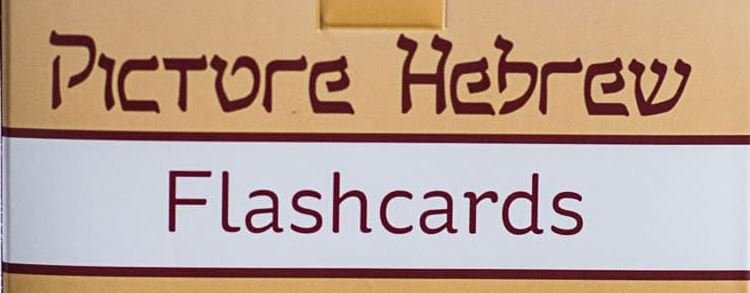Studying Hebrew, but How?
I encourage you to learn Hebrew.
When I’m then asked, “How did you do that? Which school did you attend?”, I have no answer. The college of the Lutheran Church in the south-west of Germany, where I studied biblical Hebrew, no longer exists – and besides, I learn languages more like a child, intuitively, as a “copycat,” and less analytically. That’s why my answers have not been very helpful so far.
Now I have asked some people who have studied Hebrew themselves successfully, and our son Nathanael, who has been engaged lately to “teach Hebrew to the nations.” He has summarized the following, which will hopefully be helpful to you.
The following is not an exhaustive list. It contains ideas, some of which were recommended to us by friends. It contains ideas, some of which were recommended to us by friends.
Biblical Hebrew
These resources are sorted by difficulty and price. If you do not know any Hebrew, it’s best to start at the beginning. If you already have some background and knowledge, you may use the descriptions to determine what may fit best for you.
“Aleph with Beth” is a YouTube channel for learning Hebrew. Here, Biblical Hebrew is taught in Hebrew. The first thing is to hear words and connect them with the appropriate terms. As time goes by, more and more grammatical topics are added, which are not explained but illustrated with examples, and of course the alphabet. The videos are characterized by catchy didactics and good pronunciation.
Under the link above you will find a short explanation of the concept, as well as the individual lessons (approx. 5-15 minutes per unit). After a few units, there is always the possibility to perform a short self-test.
The site www.picturehebrew.com offers various resources for learning Hebrew. There are videos explaining the grammar of Biblical Hebrew. The approach is more systematic than “Aleph with Beth”, gives a good overview, but requires more work on your own. The teaching language is English.
You may find these lessons as videos directly on YouTube at www.youtube.com/channel/UCP-m-DM6axdSmzunflBypQw/videos.
In addition, “Picture Hebrew” offers free picture books with simple texts. However, these require knowledge of the alphabet and vocabulary at varying levels of difficulty.
offers resources for learning biblical languages, including a set of vocabulary cards with pictures and audio (also for vocabulary apps) and picture books with simple texts on biblical stories.
Here you may buy a program to study Hebrew. The full version is not expected to be available until summer 2020. However, pre-orders give access to a preliminary version that already contains about half of the learning material.
Modern Hebrew
offers magazines in simple Hebrew. From beginner to advanced, each month we receive one or two issues from an Israeli family newsroom in West Jerusalem. Explanations and study guides are in English.
In Israel, some kibbutzim offer an ulpan (language school):
for young people up to the age of 35. A course for beginners (Kita Alef) or advanced students (Kita Bet) lasts five months.

A good example of this is the “Ulpan Etzion” in Kibbutz Tzuba: https://kibbutzulpan.org/ulpan-list/tzuba/ / https://www.facebook.com/UlpanKibbutzTzuba
and from the first lesson: https://www.facebook.com/UlpanKibbutzTzuba/videos/1584206104960756/?v=1584206104960756.







